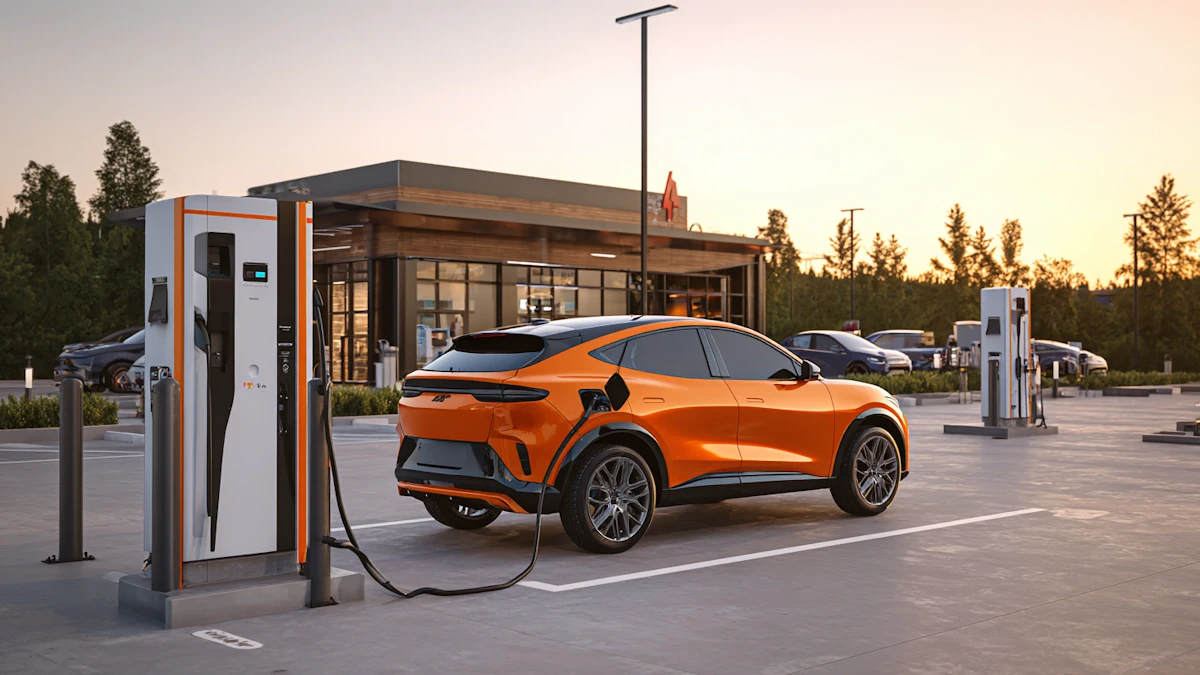 È davvero possibile caricare un veicolo elettrico in 10 minuti o meno?
È davvero possibile caricare un veicolo elettrico in 10 minuti o meno?
Nov 19, 2025
La ricarica in dieci minuti compare continuamente sui titoli dei giornali, ed è difficile dire quanto di questa promessa raggiungerà mai auto e siti reali. Se guidi un veicolo elettrico, la domanda è semplice: una breve sosta mi darà davvero abbastanza autonomia, o rimarrò comunque fermo alla colonnina per mezz'ora? Se gestisci o pianifichi punti di ricarica, il dubbio si trasforma in un'altra versione dello stesso: ha senso spendere di più in hardware ad alta potenza per un'esperienza di "10 minuti"? Per un tipico veicolo elettrico odierno, la risposta è chiara: una ricarica completa dallo 0 al 100% in dieci minuti non è realistica. Ciò che è realistico, con l'auto giusta e il giusto... Caricabatterie rapido CC, cavo e connettore, è quello di aggiungere un utile blocco di autonomia in quel lasso di tempo. Capire dove si trova quel limite, e cosa richiede alla batteria e all'hardware, è ciò che conta sia per i conducenti che per i proprietari del progetto. 1.È possibile caricare un veicolo elettrico in 10 minuti? I tempi di ricarica sono sempre legati a una finestra di stato di carica (SOC). La maggior parte dei dati di ricarica rapida si riferisce a un intervallo compreso tra il 10 e l'80%, non tra lo 0 e il 100%.Nella parte centrale dell'intervallo SOC, le celle agli ioni di litio possono accettare correnti molto più elevate. Verso la parte superiore, il sistema di gestione della batteria (BMS) deve interrompere l'alimentazione per prevenire il surriscaldamento, la placcatura in litio e altri guasti. Ecco perché l'ultimo 20% sembra spesso rallentare.Quindi, quando qualcuno afferma "ricarica in 10 minuti", di solito intende una di queste tre cose:·aggiungendo una quantità fissa di energia (ad esempio 20–30 kWh)·aggiungendo una quantità fissa di autonomia (ad esempio 200 km)·muoversi attraverso una finestra SOC media su un veicolo e un caricabatterie specifici Sono davvero poche le combinazioni reali che riescono a garantire un riempimento completo in quel lasso di tempo. 2.Quanto velocemente si ricaricano i veicoli elettrici: dalla corrente alternata domestica alla corrente continua ultraveloce Nell'uso reale, la velocità di ricarica è definita più dal contesto che da un singolo grande numero espresso in kW. Aria condizionata domestica·La ricarica domestica di livello 1 e di livello 2 è a bassa potenza ma sempre disponibile.·Un'auto può restare collegata alla presa di corrente per 6-10 ore durante la notte.·Questa quantità è sufficiente per coprire la maggior parte degli spostamenti quotidiani senza mai dover utilizzare i caricabatterie rapidi CC. Ricarica rapida CC convenzionale (circa 50–150 kW)·Sulle auto compatibili, il 10-80% richiede spesso 30-60 minuti.·I modelli più vecchi, i pacchi di piccole dimensioni o i veicoli limitati a una potenza CC inferiore potrebbero richiedere più tempo.·Per molti automobilisti, questa è ancora una tappa naturale per una sosta per mangiare o per fare shopping. DC ad alta potenza e ultraveloce (250–350 kW e oltre)·Le moderne piattaforme ad alta tensione possono assorbire una potenza molto elevata nella banda SOC media.·In buone condizioni (batteria pre-condizionata, clima mite, basso SOC iniziale), in 10-20 minuti l'auto può passare da un basso SOC a un livello confortevole per la tappa successiva. Per gli operatori del sito, gli stessi fattori che influenzano l'esperienza del conducente influenzano anche l'utilizzo:·arrivo SOC·dimensioni della batteria e capacità CC del mix di veicoli locali·per quanto tempo i conducenti scelgono effettivamente di rimanereUn sito in cui la maggior parte delle auto resta ferma per 45 minuti si comporta in modo molto diverso, in termini di veicoli serviti al giorno, da uno in cui la maggior parte delle auto resta ferma per 10-15 minuti, anche se la potenza del caricabatterie pubblicizzata è simile. 3.Cosa aggiunge realmente una sosta di 10 minuti Gli automobilisti pensano in termini di distanza, non in percentuali. I proprietari di aree di sosta pensano in termini di veicoli per piazzola al giorno. Entrambi i numeri possono essere tradotti dagli stessi elementi di base.La tabella seguente utilizza semplici archetipi per mostrare come potrebbero apparire in pratica dieci minuti di utilizzo di un caricabatterie CC ad alta potenza adatto.Archetipo del veicoloBatteria (kWh)Potenza massima CC (kW)Energia in 10 min (kWh)*Autonomia aggiunta (km)*Caso d'uso tipicoSUV ad alta tensione per autostrade90250–27035–40150–200Lunghi tratti autostradaliBerlina familiare di medie dimensioni70150–20022–28110–160Misto città e autostradaVeicolo elettrico compatto per la città5080–12013–1870–120Per lo più urbano, occasionalmente autostradalefurgone commerciale leggero75120–15020–2590–140Percorsi di consegna, ricariche in deposito *Presuppone una finestra SOC favorevole (ad esempio 10-60%) su un caricabatterie CC ad alta potenza compatibile a temperatura moderata. Per un pendolare, una sosta di 10 minuti potrebbe bastare per diversi giorni di guida in città. Per un automobilista che percorre lunghe distanze, potrebbe essere un tratto in più di autostrada senza ansia da autonomia. Considerando il turnover dei parcheggi, la stessa tabella suggerisce che un parcheggio ad alta potenza può servire diversi veicoli all'ora se la maggior parte dei conducenti necessita solo di 10-15 minuti, anziché bloccare un parcheggio per quasi un'ora per auto. 4.Cosa può sopportare la batteria: limiti e durataLa batteria è il primo limite assoluto alla ricarica in dieci minuti.Chimica e velocità di carica·Ogni tipologia di cella ha una velocità di carica pratica (C-rate) che può tollerare.·Se si esercita troppa pressione su una cella, il litio può depositarsi sull'anodo, danneggiandone la capacità e creando problemi di sicurezza. Calore·Una corrente elevata provoca perdite interne e calore.·Se il calore non può essere rimosso abbastanza rapidamente, la temperatura della cella aumenta e il BMS riduce la potenza per rimanere entro limiti di sicurezza. Dipendenza da SOC·Le celle accettano la ricarica rapida più comodamente a SOC basso e medio.·Quando la batteria è quasi piena, i margini di sicurezza si restringono e la ricarica deve rallentare. La ricerca sulla ricarica estremamente rapida opera su tutti e tre i fronti: nuovi materiali per gli elettrodi, migliore geometria delle celle e percorsi di raffreddamento più efficaci. Ciononostante, la ricarica estremamente rapida è sempre legata a una banda SOC limitata e presuppone un pacco batterie e un sistema termico appositamente progettati. Uso quotidiano e a vitaPer gli automobilisti privati, la domanda non è tanto "la batteria può gestire una ricarica rapida di 10 minuti?" quanto piuttosto "cosa succede se faccio questa operazione di continuo?" Punti chiave:·La ricarica rapida occasionale in CC durante i lunghi viaggi ha un impatto moderato sulla durata.·L'uso frequente di corrente continua ad alta potenza, in particolare con SOC molto elevato, può accelerare l'invecchiamento.·Rimanere in una finestra SOC moderata e lasciare che il BMS e il sistema termico facciano il loro lavoro aiuta molto. Uno schema pratico è il seguente:·aria condizionata domestica o sul posto di lavoro come spina dorsale per l'energia quotidiana·Ricarica rapida CC quando la distanza o i limiti di tempo lo richiedono·non c'è bisogno di evitare completamente la corrente continua, ma non c'è nemmeno bisogno di inseguirla per ogni kWh Per le flotte e gli operatori di ride-hailing che utilizzano la ricarica rapida in corrente continua (CC), la durata utile del pacco batterie diventa parte integrante del modello di business. Le strategie di ricarica, le finestre di SOC (SOC) e il posizionamento del caricabatterie devono essere scelti tenendo conto sia della disponibilità del veicolo che dei costi di sostituzione delle batterie. 5.Hardware per la ricarica a livello di 10 minutiFornire energia utile in dieci minuti non è una questione che riguarda solo l'auto. Tutto, dal collegamento alla rete elettrica alla presa di corrente del veicolo, deve gestire un'elevata potenza in modo ripetibile. La catena in genere si presenta così:·Rete e trasformatoreCapacità contrattuale e potenza nominale del trasformatore sufficienti per più caricabatterie ad alta potenza, oltre a qualsiasi carico dell'edificio. ·Caricabatterie CCModuli di alimentazione dimensionati per la potenza prevista per ogni vano, con design termico in grado di gestire un'uscita elevata continua. Condivisione intelligente dell'alimentazione tra i connettori quando più veicoli si collegano a un unico cabinet. ·Cavo CCA centinaia di ampere, un cavo convenzionale raffreddato ad aria diventa pesante e si surriscalda. I cavi CC raffreddati a liquido consentono correnti elevate con peso e temperatura superficiale gestibili. ·Connettore CCIl connettore deve trasportare la corrente attraverso i suoi contatti mantenendo sotto controllo la temperatura e la resistenza di contatto. Deve inoltre resistere a migliaia di cicli di accoppiamento, a trattamenti intensivi e alle intemperie, spesso con elevati livelli di protezione. ·Ingresso e batteria del veicoloL'ingresso deve corrispondere allo standard del connettore e alla corrente nominale; la batteria e il BMS devono effettivamente richiedere e accettare tale alimentazione. Per i siti ad alta potenza, i connettori CCS2, CCS1 o GB/T ad alta corrente e i cavi di ricarica CC abbinati sono fondamentali per la progettazione, non gli accessori. Fornitori come Workersbee collaborano con i produttori di caricabatterie e i proprietari dei siti per fornire connettori per veicoli elettrici e sistemi di cavi CC raffreddati a liquido progettati specificamente per un servizio ad alta potenza prolungato, piuttosto che per brevi periodi di ricarica occasionali. 6.Pianificazione di un sito CC ad alta potenzaQuando i gestori di punti di ricarica o i proprietari di progetti prendono in considerazione la ricarica "in 10 minuti", copiare il valore di potenza più elevato da una brochure raramente è il modo migliore per iniziare.Un approccio più concreto è quello di procedere a ritroso, partendo da come verrà realmente utilizzato il sito. Posizione e comportamento·I corridoi autostradali prevedono soste brevi e grandi aspettative in termini di velocità.·I parcheggi commerciali urbani e le destinazioni per il tempo libero hanno un tempo di permanenza naturale, quindi la corrente continua e la corrente alternata di media potenza potrebbero offrire un valore complessivo migliore.·Depositi e centri logistici possono combinare la ricarica notturna con ricariche rapide mirate. Tempo di permanenza previsto e veicoli al giorno·Stabilire per quanto tempo un veicolo medio dovrebbe sostare e quanti veicoli dovrebbe servire ogni piazzola.·Questi numeri determinano la potenza richiesta per baia molto più di quanto dichiarato dal marketing. Disposizione di potenza·Stabilire quanti vani, se presenti, necessitano realmente di una capacità di 250-350 kW.·Altri spazi potrebbero essere meglio sfruttati a 60-120 kW, che è comunque "veloce" per molti veicoli che non possono beneficiare di una potenza maggiore. Scelta di cavi e connettori·I cavi CC a raffreddamento naturale sono più semplici ed economici, ma limitano la corrente e possono diventare pesanti con l'aumentare della potenza.·I cavi raffreddati a liquido e i connettori ad alta corrente costano di più, ma consentono sessioni più brevi e un maggiore ricambio degli alloggiamenti nelle posizioni giuste.·Nei climi rigidi o in caso di intenso utilizzo commerciale, la tenuta, la resistenza alla trazione e la robustezza richiedono particolare attenzione. Operazioni e sicurezza·Le apparecchiature ad alta potenza richiedono ispezioni regolari e procedure chiare per gestire contaminazioni, danni o surriscaldamenti.·La formazione del personale e le chiare istruzioni per l'uso riducono l'uso improprio e prolungano la durata delle apparecchiature. Molti team trovano più semplice gestire questa complessità con una breve checklist interna: caso d'uso principale, tempo di permanenza previsto, veicoli previsti per baia al giorno e quindi potenza del caricabatterie, tecnologia dei cavi e classificazione del connettore più adatti a quella combinazione. 7.Chi trae maggior beneficio dalla ricarica in 10 minuti?Non tutti hanno bisogno di sessioni di almeno dieci minuti.Autisti privati a lunga distanza·Una manciata di autentiche postazioni ad alta potenza lungo un corridoio possono trasformare i loro viaggi.·Potrebbero aver bisogno di usarli solo poche volte all'anno, ma l'impatto sulla fiducia in se stessi è notevole. Flotte di servizi di ride-hailing, taxi e consegne·Il tempo trascorso al caricabatterie è tempo impiegato per guadagnare denaro, non per farlo.·Per questi utenti, anche ridurre una sosta da 30 a 15 minuti può avere un impatto negativo sull'intera flotta.·Tuttavia, la disponibilità prevedibile e la programmazione intelligente sono spesso più importanti del valore assoluto della potenza di picco. Pendolari urbani con ricarica a casa o sul posto di lavoro·La maggior parte del fabbisogno energetico giornaliero può essere soddisfatto dall'aria condizionata.·Di solito è sufficiente una presa di corrente continua di media potenza occasionale vicino a luoghi per lo shopping o il tempo libero.·Per questo gruppo, più spine nei punti giusti sono meglio di una singola unità ultraveloce. Dal punto di vista della pianificazione della rete, ciò significa che la ricarica estremamente rapida deve essere effettuata in corridoi e hub specifici, non in ogni angolo di ogni città. 8.Come potrebbe cambiare la ricarica in dieci minuti nel prossimo decennioSono diverse le tendenze che potrebbero far percepire la ricarica rapida come più rapida, anche se il titolo di dieci minuti rimane più un caso particolare che un'abitudine quotidiana.·Le piattaforme ad alta tensione si stanno spostando verso segmenti di prezzo più diffusi.·Progettazioni di batterie in grado di accettare velocità di carica più elevate entro intervalli di sicurezza, supportate da una migliore gestione termica.·Una gestione energetica più intelligente a livello di sito e, in alcuni casi, un accumulo locale per attenuare i vincoli della rete, continuando a offrire ai veicoli un'elevata potenza di picco. Per i progetti ad alta potenza, ha senso pensare in termini di percorsi di aggiornamento: condotti, quadri elettrici, ingombri dei caricabatterie, cavi e connettori che possono essere sottoposti a manutenzione e aggiornati man mano che i veicoli si evolvono, senza dover ricostruire l'intero sito. 9.Cosa fare ora: autisti, flotte e proprietari di sitiPer gli autisti:·Non aspettarti una carica completa in dieci minuti e non ne avrai bisogno per la maggior parte dei viaggi.·Con l'auto e il caricabatterie giusti, bastano dai dieci ai quindici minuti per ottenere un'autonomia notevole.·Considera la ricarica rapida come uno strumento tra i tanti, non come l'unico modo per alimentare l'auto. Per le flotte:·Creare piani di ricarica in base alla reale presenza dei veicoli e alla struttura dei percorsi.·Utilizzare la corrente continua ad alta potenza laddove migliora chiaramente la disponibilità del veicolo, tanto da giustificarne il costo, e regolare le finestre SOC per proteggere la durata del pacco. Per i proprietari di siti e i CPO:·Inizia dai casi d'uso, dai modelli di traffico e dai tempi di permanenza desiderati, quindi dimensiona di conseguenza alimentazione, cavi e connettori.·Per i siti che necessitano realmente di un funzionamento ad alta potenza, è opportuno investire in connettori CC ad alta corrente e in una tecnologia di cablaggio adeguata; si tratta di infrastrutture fondamentali, non di optional. FAQ: ricarica EV in 10 minutiOggi qualsiasi veicolo elettrico può ricaricarsi completamente in 10 minuti?Per gli attuali veicoli elettrici per passeggeri, una ricarica completa dallo 0 al 100% in dieci minuti non è realistica. I tempi di ricarica rapida sono sempre legati a una finestra di stato di carica, ad esempio dal 10 all'80%, e presuppongono un caricabatterie CC ad alta potenza compatibile. Anche le auto più veloci rallentano bruscamente quando si avvicinano a un livello di carica elevato per proteggere la batteria. Quanta autonomia può raggiungere un tipico veicolo elettrico in una sosta di 10 minuti?Con un caricabatterie CC ad alta potenza adeguato, molti veicoli elettrici moderni possono aggiungere circa 70-200 km di autonomia in dieci minuti. Il numero esatto dipende dalle dimensioni della batteria, dalla potenza massima in CC supportata dall'auto, dalla temperatura e dallo stato di carica al momento dell'arrivo. In condizioni favorevoli, una sosta di 10 minuti è spesso sufficiente per coprire diversi giorni di viaggio o un ulteriore tratto di autostrada. La ricarica rapida danneggia sempre la batteria di un veicolo elettrico?La ricarica rapida aggiunge ulteriore stress rispetto alla ricarica CA delicata, soprattutto se utilizzata molto spesso e fino a un livello di carica molto alto. I moderni pacchi batteria, i sistemi termici e i software di gestione delle batterie sono progettati per mantenere le celle entro limiti di sicurezza e riducono la potenza quando necessario. La ricarica rapida CC occasionale durante i viaggi è solitamente accettabile; usarla quotidianamente come metodo di ricarica principale può accelerare l'invecchiamento ed è meglio gestirla con finestre di stato di carica ragionevoli. In quali casi la ricarica ultraveloce dei veicoli elettrici ha più senso?La ricarica DC ultraveloce è particolarmente utile su corridoi autostradali trafficati, depositi e hub, dove i veicoli devono effettuare rapidamente inversioni di marcia. Gli autisti privati che percorrono lunghe distanze, le flotte di servizi di ride-hailing e i furgoni per le consegne traggono i massimi vantaggi da soste più brevi e da un maggiore ricambio delle piazzole. Nelle aree urbane con lunghi tempi di sosta naturali, un numero maggiore di caricabatterie DC o AC di media potenza è spesso più utile agli autisti rispetto a una singola unità ultraveloce. Tutti i caricabatterie ad alta potenza garantiscono la stessa velocità reale?Non necessariamente. La potenza indicata sull'armadietto del caricabatterie è solo una parte del problema; il limite di corrente continua dell'auto, la sua curva di carica, la potenza di cavi e connettori, la temperatura e il numero di veicoli che condividono lo stesso armadietto influiscono tutti sulla velocità reale. In pratica, un'auto e un caricabatterie ben abbinati che funzionano comodamente entro i limiti di progettazione offriranno spesso un'esperienza migliore rispetto a un "numero maggiore" utilizzato al di fuori delle condizioni ideali. Workersbee collabora con i produttori di caricabatterie e i proprietari di siti per progettare Connettori EV e cavi di ricarica CC per CCS2, CCS1, GB/T e altri standard ad alta potenza. Quando la batteria, il caricabatterie, il cavo e il connettore sono specificati come un unico sistema anziché come componenti separati, una sosta di dieci minuti diventa una parte prevedibile dell'esperienza di ricarica nei luoghi in cui apporta realmente valore aggiunto.
PER SAPERNE DI PIÙ

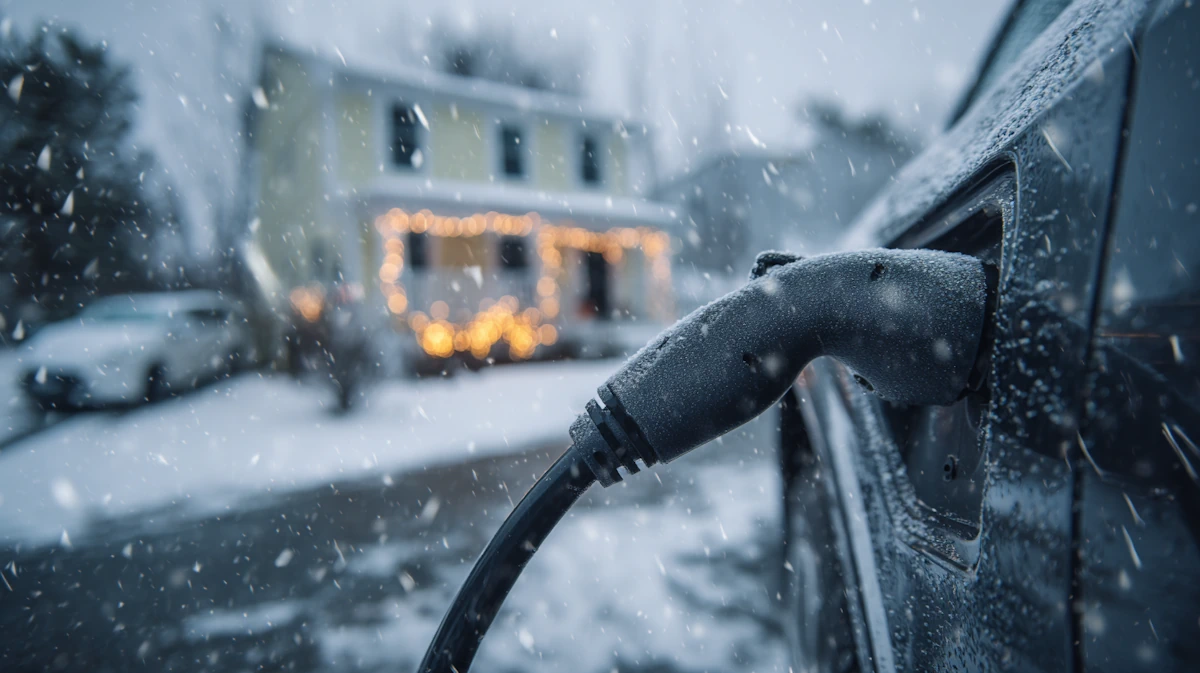 Quali sono le migliori soluzioni di ricarica domestica per i proprietari di veicoli elettrici?
Quali sono le migliori soluzioni di ricarica domestica per i proprietari di veicoli elettrici?
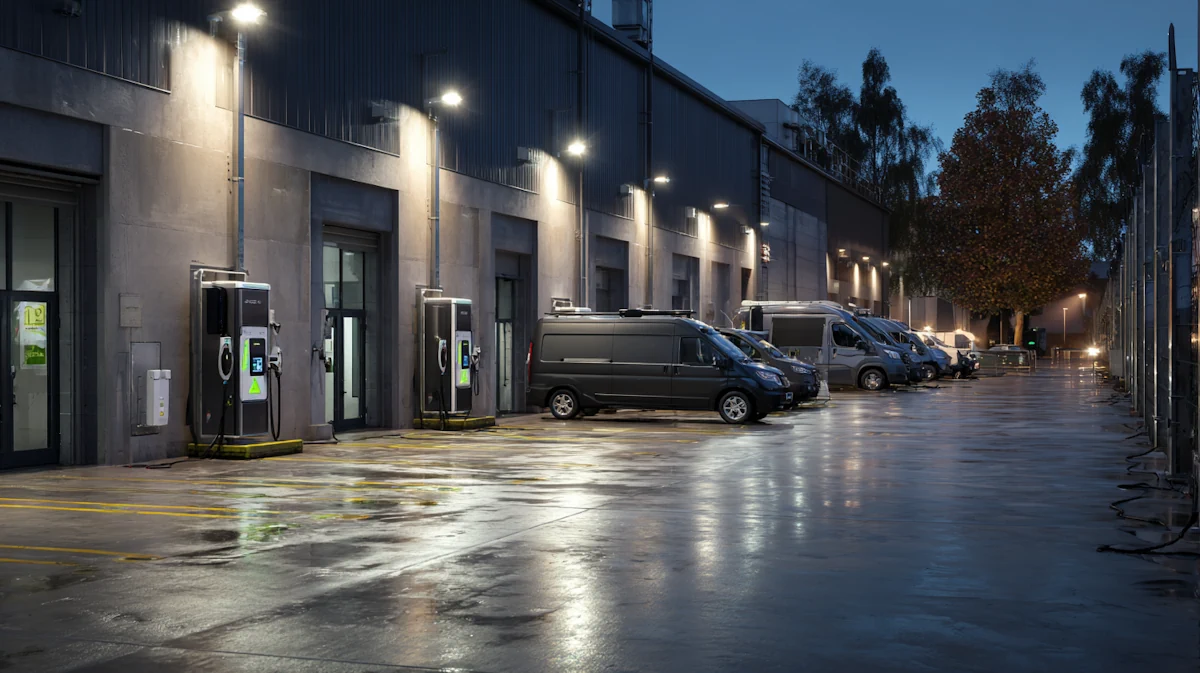 Ricarica CA vs CC per veicoli elettrici: come cambia il design dei connettori e dei cavi
Ricarica CA vs CC per veicoli elettrici: come cambia il design dei connettori e dei cavi
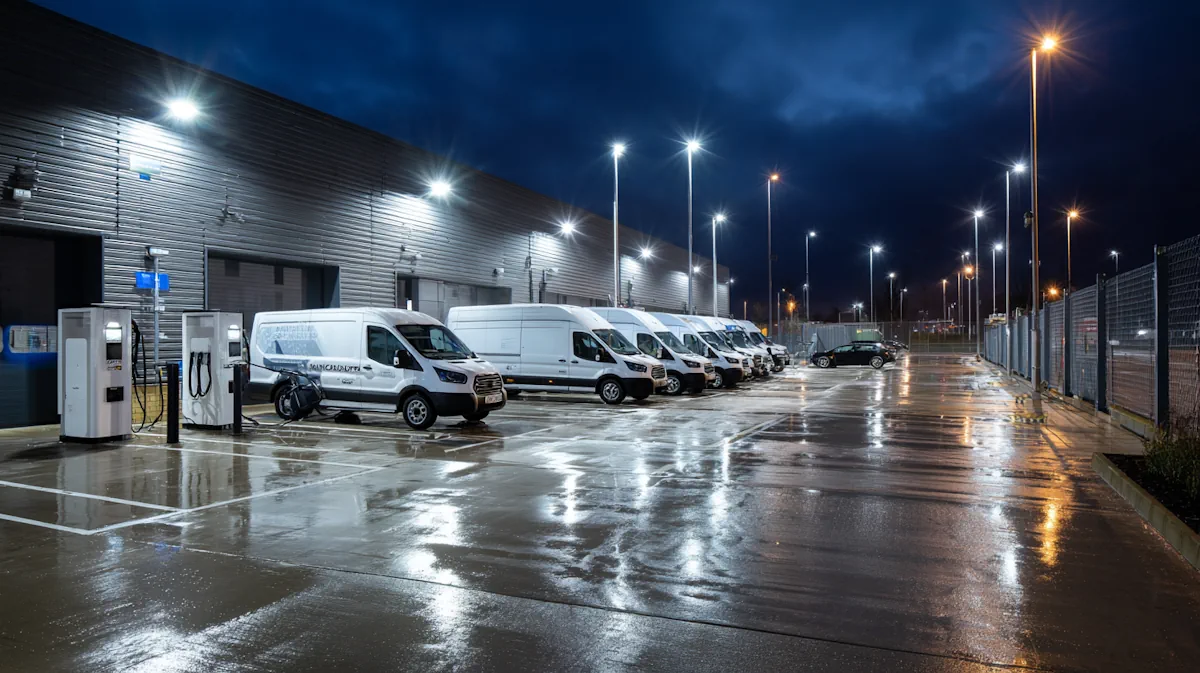 Di quale livello di ricarica per veicoli elettrici hanno realmente bisogno le flotte?
Di quale livello di ricarica per veicoli elettrici hanno realmente bisogno le flotte?
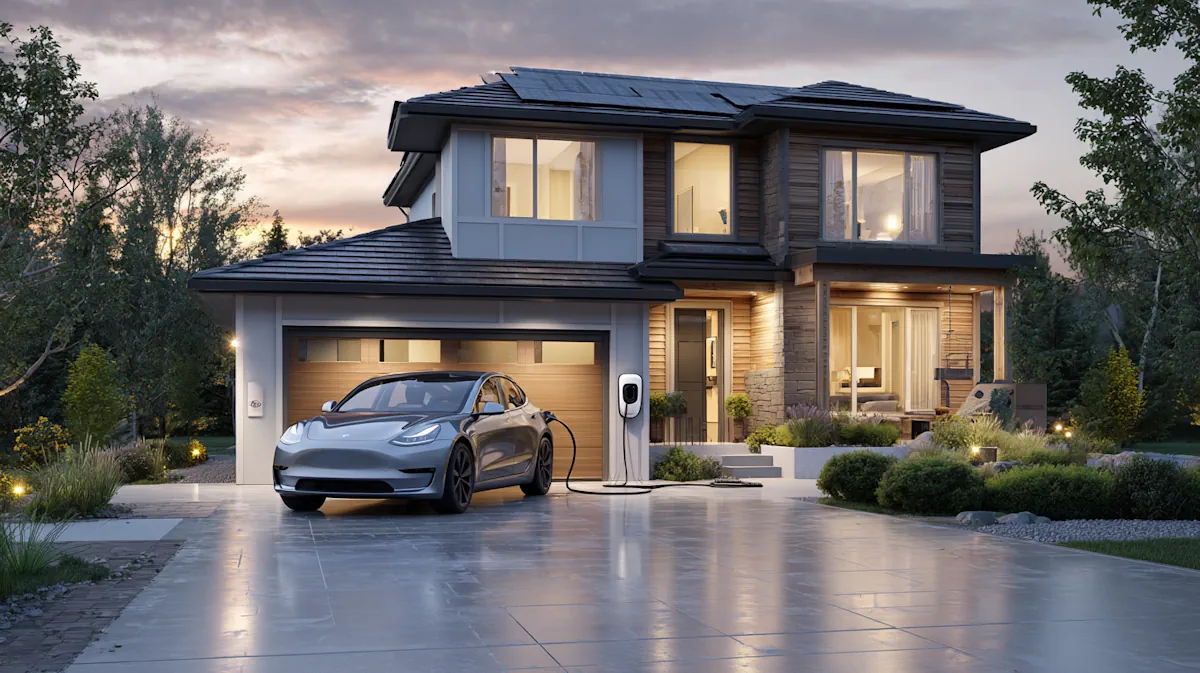 Ricarica domestica di livello 1 o di livello 2: quale si adatta meglio al tuo stile di vita?
Ricarica domestica di livello 1 o di livello 2: quale si adatta meglio al tuo stile di vita?
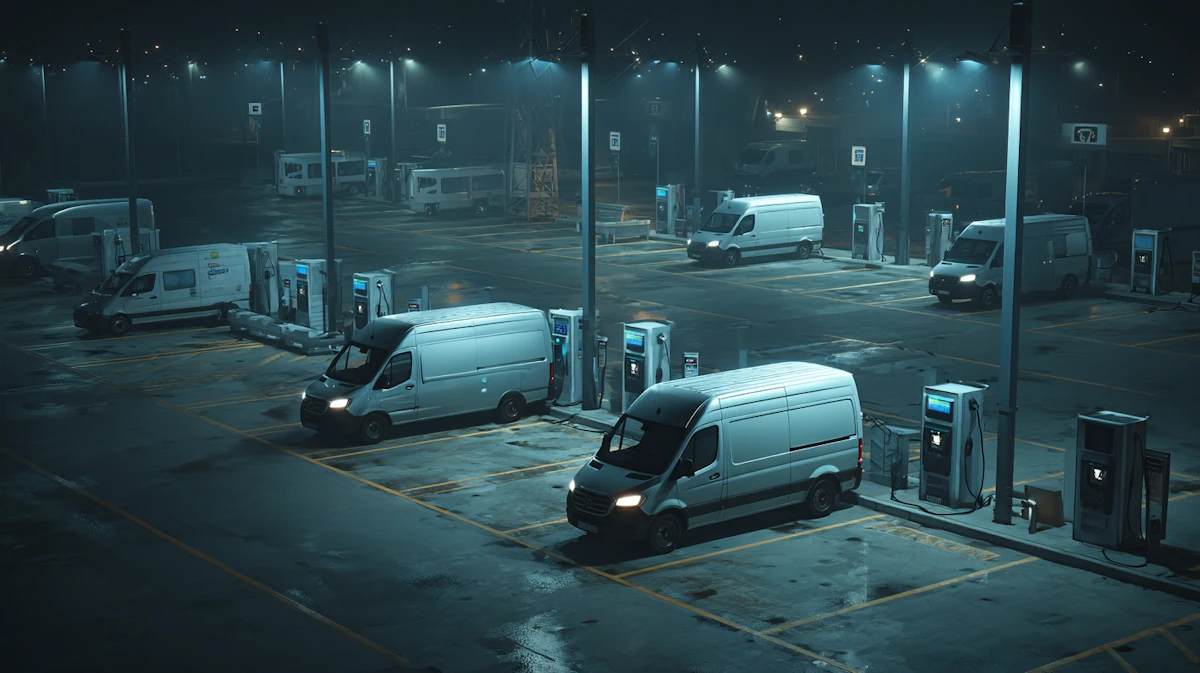 Livelli di ricarica dei veicoli elettrici spiegati: livello 1, livello 2 e ricarica rapida CC
Livelli di ricarica dei veicoli elettrici spiegati: livello 1, livello 2 e ricarica rapida CC
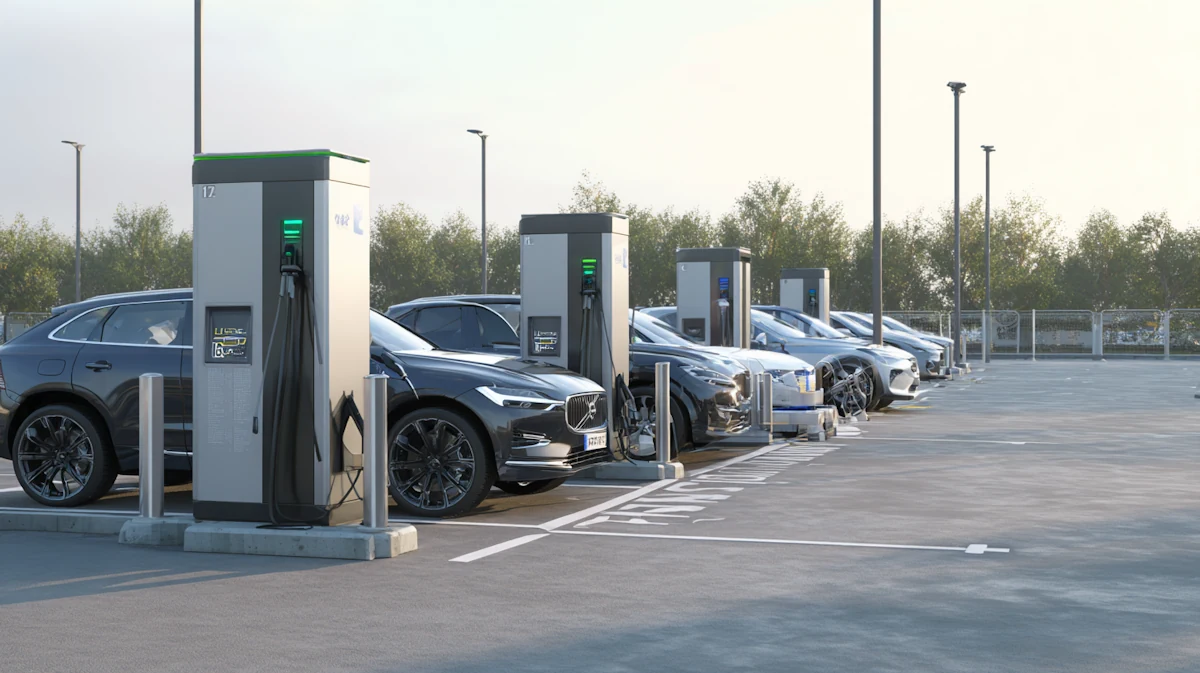 Glossario della ricarica dei veicoli elettrici (dalla A alla Z)
Glossario della ricarica dei veicoli elettrici (dalla A alla Z)
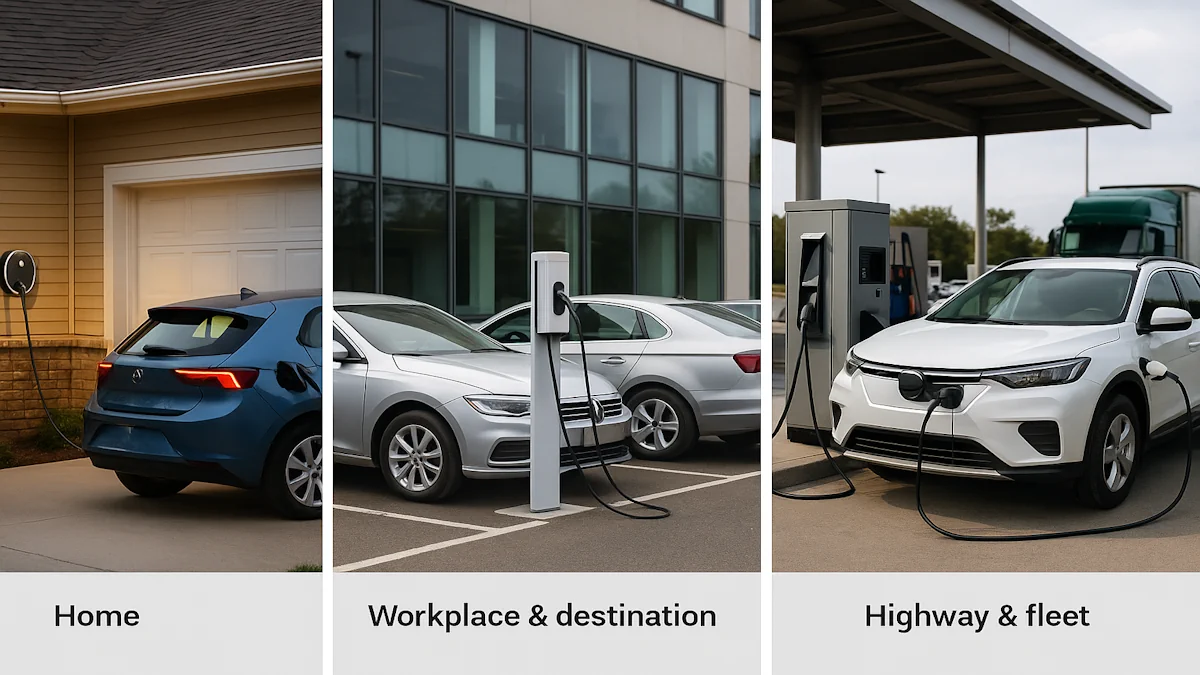 Spiegazione della ricarica EV in modalità 1, 2, 3 e 4: a cosa serve ciascuna
Spiegazione della ricarica EV in modalità 1, 2, 3 e 4: a cosa serve ciascuna
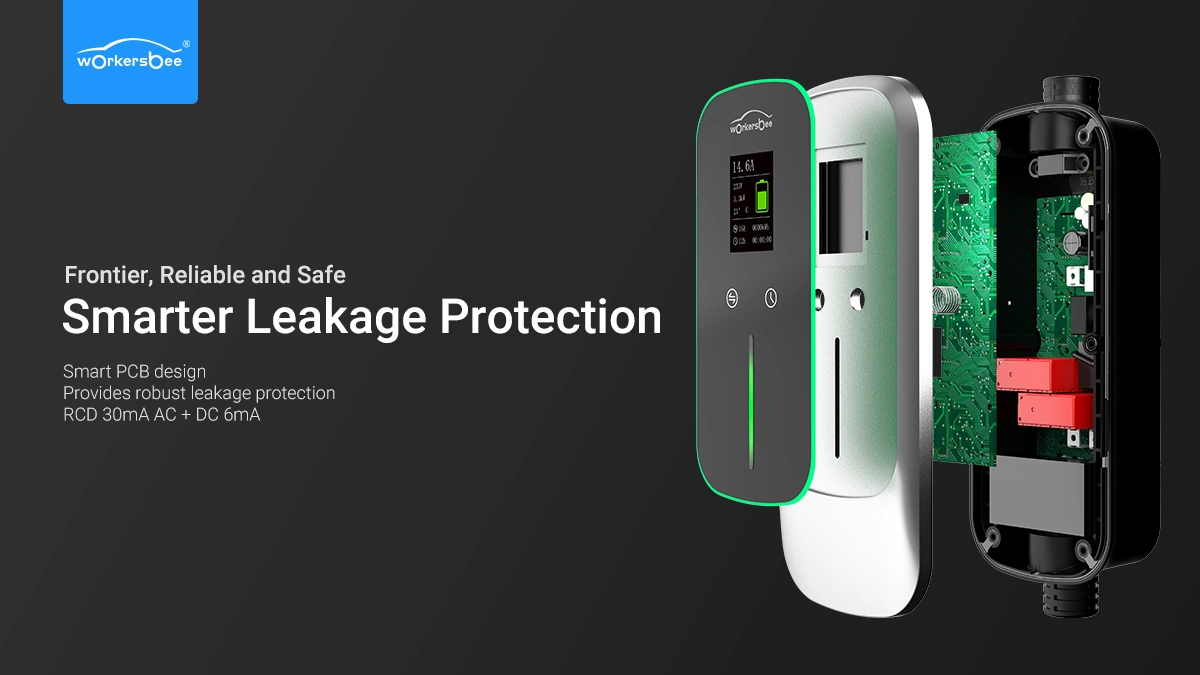 Vale la pena acquistare una stazione di ricarica portatile per veicoli elettrici? Una guida pratica per l'uso quotidiano
Vale la pena acquistare una stazione di ricarica portatile per veicoli elettrici? Una guida pratica per l'uso quotidiano
 È davvero possibile caricare un veicolo elettrico in 10 minuti o meno?
È davvero possibile caricare un veicolo elettrico in 10 minuti o meno?
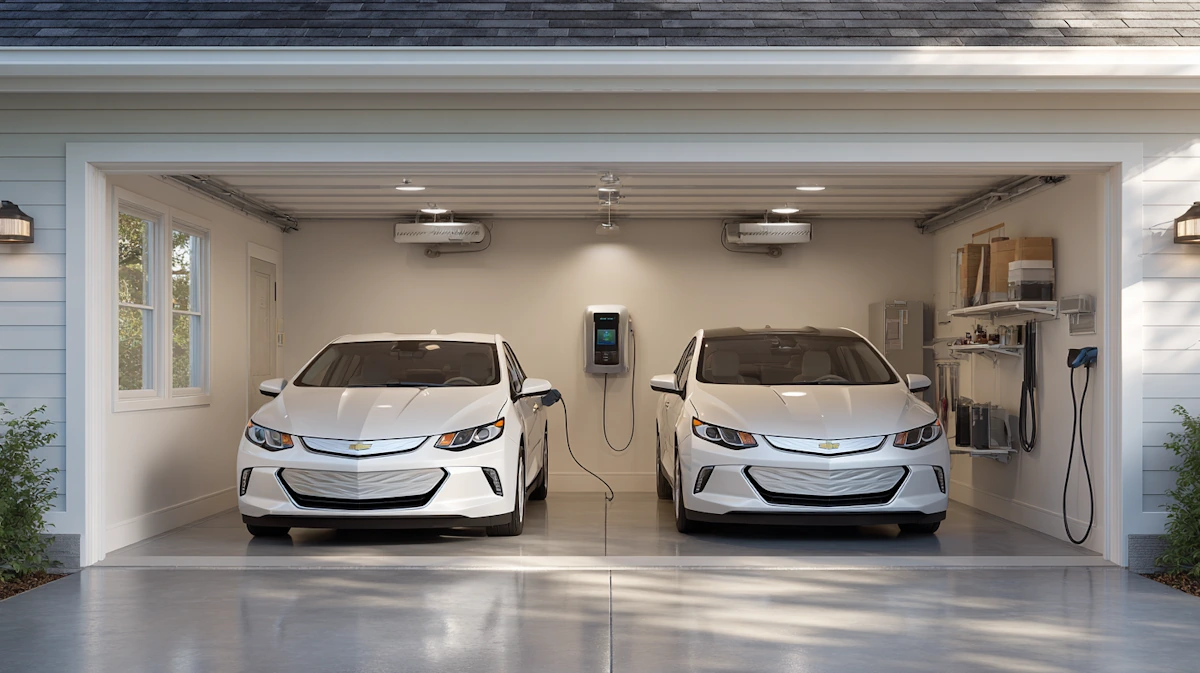 Due veicoli elettrici in casa: un caricabatterie o due?
Due veicoli elettrici in casa: un caricabatterie o due?
 Come utilizzare i caricabatterie pubblici per veicoli elettrici
Come utilizzare i caricabatterie pubblici per veicoli elettrici
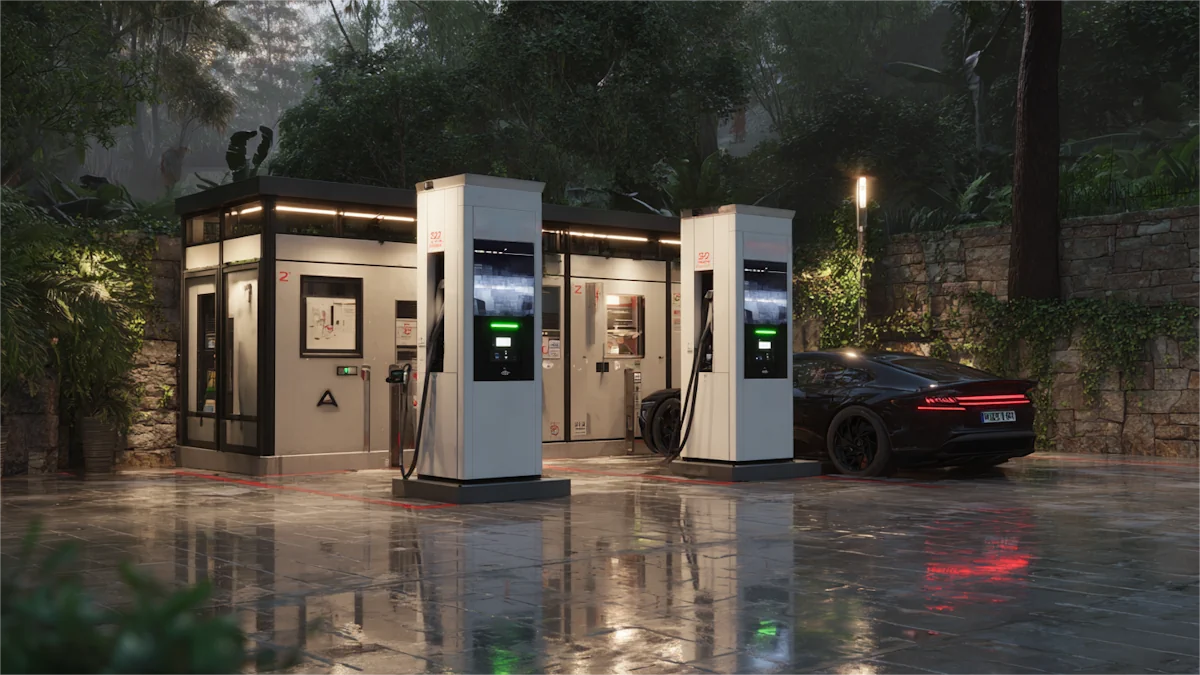 Come sapere se il tuo veicolo elettrico è effettivamente in carica
Come sapere se il tuo veicolo elettrico è effettivamente in carica